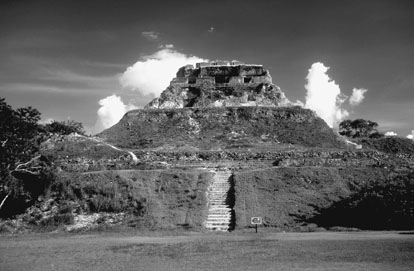

 | Page 151 |  |
Maya specialists from U.S. universities to work in Belize: Linton Satterthwaite from the University of Pennsylvania began work at Caracol in 1951, followed by gordon willey of Harvard, who worked in the Belize Valley in 1953. Willey had already done innovative settlement-pattern work in peru, and he now brought the idea of regional archaeology to Belize, at the same time moving away from the major sites to examine rural residences. Most of his work was focused on Barton Ramie, an arbitrarily cleared zone of valley bottom located downstream from Xunantunich; at this site a substantial sample of house-platforms were tested and some excavated totally, and a ceramic chronology from around 600 b.c. to a.d. 1000 was elucidated. The final publication (Willey et al. 1965) developed a model of Maya settlement dynamics that underpinned numerous other projects across the lowlands in the ensuing decades. The Barton Ramie site, like so many others in Belize, was later destroyed by bulldozing to make way for agricultural development.

Mayan temple ruins, Xanantunich, Cayo, Belize
(Spectrum Colour Library)
William R. Bullard Jr., a member of Willey’s team, joined the Royal Ontario Museum in Toronto, canada, and initiated a program of field research that was scheduled to begin in 1961 at the large site of Lamanai. Hurricane damage and a loss of communications instead led Bullard to study Baking Pot, the major center close to Barton Ramie, and then San Estevan in northern Belize. His successor at the Royal Ontario Museum, David M. Pendergast, took up Anderson’s invitation to work at Altun Ha, closer to Belize City; between 1964 and 1970 the modest ruins yielded a series of spectacular burials and finds (Pendergast 1979–1990). These efforts culminated in 1968 with the discovery of the largest Maya jade known, in the form of a head of the Sun God. This, more than anything else, changed perceptions of the eastern lowlands as a cultural backwater, distant from the innovative developments in Peten and Yucatán.
The problem-oriented period (1970 to the present) began under the combined influence of the processualist New Archaeology and major funding from the National Science Foundation in the United States. Both joined research designs with a predefined set of expectations; exploration on the Carnegie model, to acquire knowledge and build interpretation from it, was no longer fashionable or fundable. In Belize a new and comprehensive
 |  |